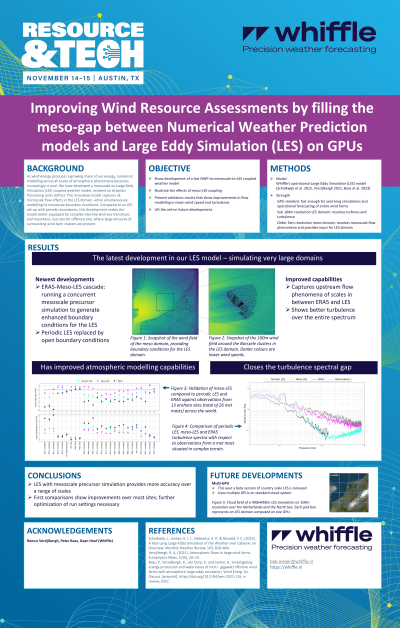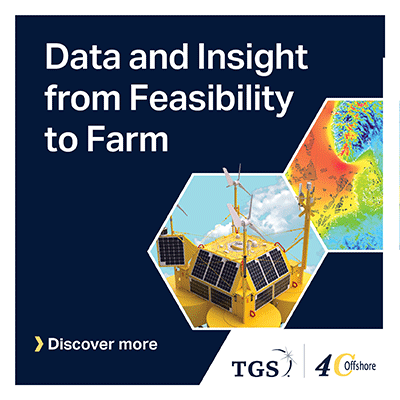Back

Wind: Wakes & Losses
Improving Wind Resource Assessments by filling the meso-gap between Numerical Weather Prediction models and Large Eddy Simulation on GPUs
Tuesday, November 14, 2023
4:15pm – 5:15pm CST


Bob Meijer
CCO
Whiffle - precision weather forecasting
Delft, Zuid-Holland, Netherlands
Presenter(s)
Presentation Description: As the size of offshore wind farm clusters grows, so does the need to understand the full spectrum of flow phenomena and atmospheric interaction. Large Eddy Simulation (LES) provides a technique that allows to simulate this full spectrum, including the effects of complex terrain, wakes, land-sea interaction, cluster and global blockage.
Running Large Eddy Simulation (LES) on Graphics Processing Units (GPUs) brought a tremendous speed up allowing even finer detail to be simulated. Whiffle’s GPU based LES weather model GRASP includes wind turbines, represented as actuator-disks and allows complex windfarm-atmosphere interactions like global blockage and (far) wake effects are fully captured in this approach.
However, even with the computational power of GPUs, the existing LES model is limited in domain size, which makes incorporating the effects of mesoscale orography, land-sea interfaces or large windfarm clusters challenging.
Recent developments address this challenge by nesting the LES within a meso-scale model running in parallel. The implementation adds a new scale of flow phenomena to the LES simulation altogether, the mesoscale phenomena. This approach works well for events like land-sea breezes and gap-winds, which are too small to be captured in a 30-kilometer-resolution reanalysis model and too large to be included in the LES domain.
Expanding from LES into the meso-domain is a big step towards modeling the complete spectrum of real meteorological conditions in one single model run, including land-sea transitions, wakes and blockage effects resulting in more accurate Wind Resource Assessments and Annual Energy Production estimates.
Running Large Eddy Simulation (LES) on Graphics Processing Units (GPUs) brought a tremendous speed up allowing even finer detail to be simulated. Whiffle’s GPU based LES weather model GRASP includes wind turbines, represented as actuator-disks and allows complex windfarm-atmosphere interactions like global blockage and (far) wake effects are fully captured in this approach.
However, even with the computational power of GPUs, the existing LES model is limited in domain size, which makes incorporating the effects of mesoscale orography, land-sea interfaces or large windfarm clusters challenging.
Recent developments address this challenge by nesting the LES within a meso-scale model running in parallel. The implementation adds a new scale of flow phenomena to the LES simulation altogether, the mesoscale phenomena. This approach works well for events like land-sea breezes and gap-winds, which are too small to be captured in a 30-kilometer-resolution reanalysis model and too large to be included in the LES domain.
Expanding from LES into the meso-domain is a big step towards modeling the complete spectrum of real meteorological conditions in one single model run, including land-sea transitions, wakes and blockage effects resulting in more accurate Wind Resource Assessments and Annual Energy Production estimates.
Learning Objectives:
- By the end of the presentation participants have a clear understanding of the potential to create more precise wind resource assessments by simulating complex wakes, complex terrain, land-sea interaction, cluster and blockage effects with Large Eddy Simulation in meso-scale models.
- Participants will understand the potential of new methods of nesting turbulence resolving Large Eddy Simulation in meso-scale models and application to allow simulation of the full spectrum of complex atmospheric interaction between wind turbines, wind farm clusters, terrain.
- The presentation gives participants an understanding of the state of the art and challenges in simulating atmospheric flow over complex wind sites and the need to bridge the gap from meso-scale phenomena to micro-scale to effectively assess wind farm production; visualisation videos of these simulations using real weather enhance this understanding.

